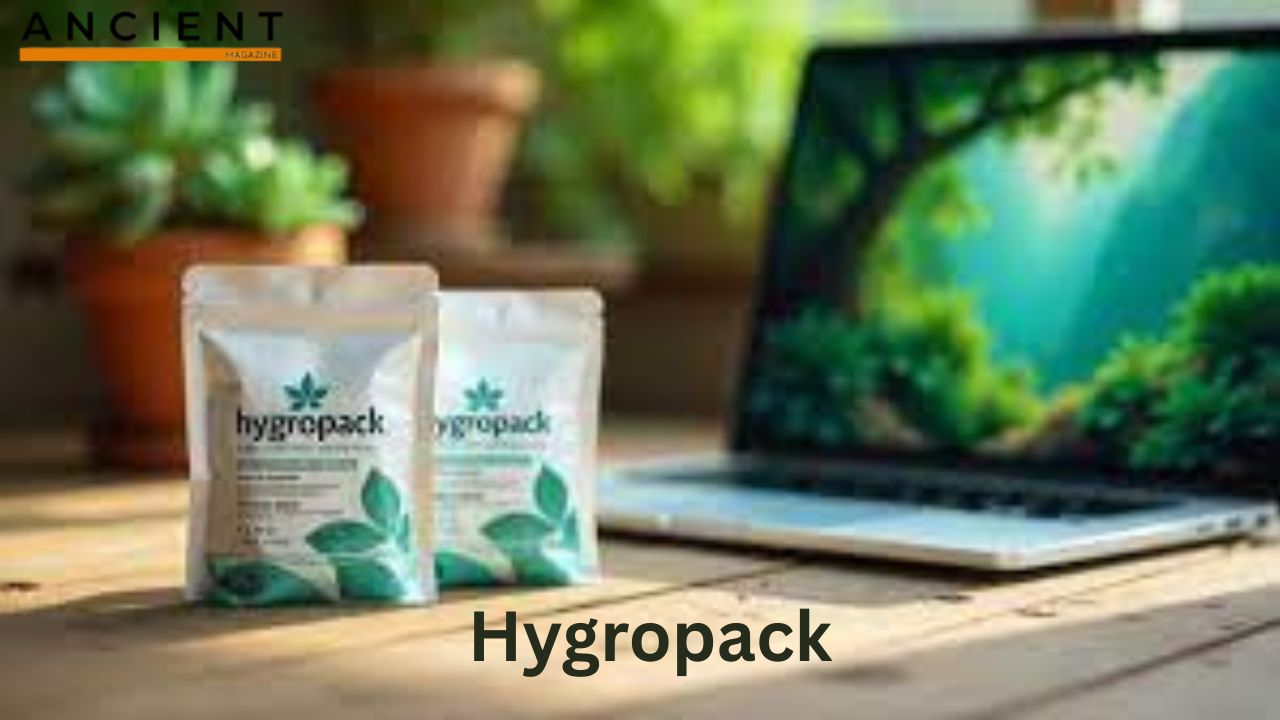Hygropack: How Moisture Control Works and Its Benefits

1. Introduction: The Invisible Threat of Moisture
I always thought air was just air—until I saw how moisture ruined some electronics I had stored away. Moisture is something we can’t see, but it can cause serious damage. It can lead to mold, rust, bad smells, and product failure. That’s where moisture control matters. It helps protect products that need to stay dry. Hygropack is a smart solution for this. It helps keep things safe and dry.
Table of Contents
- What is a Hygropack?
- Why Moisture Control Matters
- How Hygropack Works: A Scientific Overview
- Types of Hygropack Technologies
- Key Components of a Hygropack
- Hygropack vs Traditional Desiccants
- Common Applications of Hygropack
- Benefits in Industrial Manufacturing
- Hygropack in Electronics & Semiconductors
- Moisture Control for Pharmaceuticals
- Food Packaging and Freshness
- Hygropack in Textiles and Apparel
- Sustainable Packaging and Eco-Friendly Use
- Cost-Efficiency and ROI
- Case Studies: Hygropack in Action
- Choosing the Right Hygropack
- Storage, Shelf Life, and Maintenance
- Future of Moisture Control Technology
- Conclusion: The Power of Hygropack
2. What is a Hygropack?
A Hygropack is a small packet that controls moisture inside packages. It looks simple, like a tea bag, but it holds special drying materials. These materials pull moisture from the air and trap it inside. I like using Hygropack when I store my camera or dry food. It helps keep everything dry and fresh. The main goal of a Hygropack is to keep moisture from building up. It protects products that are sensitive to wetness.
3. Why Moisture Control Matters
Moisture can break products, grow mold, and cause corrosion. In places like factories, warehouses, or homes, moisture damage leads to losses. I once saw a package of tablets go bad just because of moisture. So, keeping the right dryness is important. Hygropack helps in many industries like:
- Electronics
- Food packaging
- Pharmaceuticals
- Textiles
- Semiconductors
4. How Hygropack Works: A Scientific Overview
Hygropack uses desiccants like silica gel or clay. These materials soak up water molecules. I think of it as a sponge that never leaks. The science is simple:
- Air inside the package holds water vapor
- Hygropack absorbs the vapor
- It prevents moisture from touching the product This helps keep things safe for a longer time.
5. Types of Hygropack Technologies
There are many kinds of Hygropack. Each one works best in different settings. These are the most common:
- Silica Gel Hygropack
- Clay-Based Hygropack
- Molecular Sieve Hygropack
- Activated Carbon Hygropack (for odor + moisture) For example, I use silica gel Hygropack for electronics. It works quickly and is easy to find.
6. Key Components of a Hygropack
Each Hygropack has a few key parts:
- Outer Packet: Usually paper or fabric
- Desiccant Inside: Like silica gel or clay
- Printing/Labels: Safety warnings or color indicators Some packets change color when full of moisture. That helps me know when to replace them.
7. Hygropack vs Traditional Desiccants
I used to use loose silica beads. They worked but made a mess. Hygropack is cleaner. Let’s compare:
- Hygropack is sealed, safer for food and medicine
- Easy to place inside boxes or packets
- No direct contact with the product Traditional desiccants are useful too, but Hygropack is more modern and safer.
8. Common Applications of Hygropack
Hygropack is used in many industries:
- Electronics: Protects chips, boards, and devices
- Medicine: Keeps pills dry
- Textiles: Prevents mildew on clothes
- Food: Stops sogginess At home, I use Hygropack in shoe boxes and bags.
9. Benefits in Industrial Manufacturing
Factories use Hygropack to stop damage during shipping and storage. Wet goods can get rejected. With Hygropack, products stay dry. This lowers returns and increases product life. In factories:
- Machines last longer
- Spare parts stay rust-free
- Workers don’t have to check every box
10. Hygropack in Electronics & Semiconductors
Electronics are very sensitive to water. I once had a memory chip go bad after a week in storage. Hygropack protects:
- Microchips
- Phones
- Laptops
- Medical devices Even tiny moisture levels can hurt them. So manufacturers seal them with Hygropack inside.
11. Moisture Control for Pharmaceuticals
Pills, tablets, and powders break down with moisture. Hygropack makes sure medicine stays safe. It meets health safety standards. In drug packages, the Hygropack:
- Extends shelf life
- Keeps formula stable
- Prevents spoilage I check for Hygropack in every supplement I buy.
12. Food Packaging and Freshness
Moisture ruins dry snacks like chips or cookies. When I open a pack and see a Hygropack inside, I feel safe. It helps food stay:
- Crispy
- Mold-free
- Fresh for longer Food makers love using it in snack bags, coffee tins, and spice boxes.
13. Hygropack in Textiles and Apparel
Shipping clothes in rainy seasons can lead to mildew. Hygropack protects clothes during shipping. Big fashion brands add them in:
- Shoe boxes
- Suit packs
- Clothing bags I keep them in my travel bags too. They work well.
14. Sustainable Packaging and Eco-Friendly Use
Some Hygropack brands use paper or biodegradable materials. I like this because it’s safe for nature. Features of eco-friendly Hygropack:
- No harmful chemicals
- Recyclable outer layer
- Less waste This is good for companies trying to reduce plastic use.
15. Cost-Efficiency and ROI
Using Hygropack may seem like a small thing, but it saves money in the long run. Less product damage means less loss. Companies save on:
- Returns
- Waste
- Customer complaints I see it as a small price for big safety.
16. Case Studies: Hygropack in Action
ElectroPro Inc. (USA)
This tech company cut product returns by 40% after using Hygropack in all shipments.
NutraMed (Germany)
Their vitamin shelf life increased from 18 to 24 months thanks to Hygropack.
Heritage Textiles (India)
Using Hygropack during export helped avoid mildew complaints and saved $25,000 yearly.
17. Choosing the Right Hygropack
Choosing the best Hygropack depends on what you need to protect. Ask these questions:
- Is the product food, medicine, or electronic?
- How long is storage?
- What size of packet is needed? If I need to store a small gadget, I use a 5g silica Hygropack. For large clothes boxes, I pick a 50g clay Hygropack.
18. Storage, Shelf Life, and Maintenance
Hygropack lasts long if stored dry and sealed. Shelf life is around 1–3 years. Tips:
- Keep unused packets in airtight bags
- Don’t reuse after they change color
- Replace every few months I mark the date on mine so I know when to replace it.
19. Future of Moisture Control Technology
New ideas are coming. Smart Hygropack can send alerts when full. Some even link with phone apps. Future Hygropack may include:
- Color sensors
- Reusable packs
- Smart tracking This means even better protection for products.
20. Conclusion: The Power of Hygropack
Hygropack is simple, but it solves a big problem. I use it in daily life and so do many industries. It keeps products dry, safe, and fresh. From food to electronics, Hygropack helps protect value





